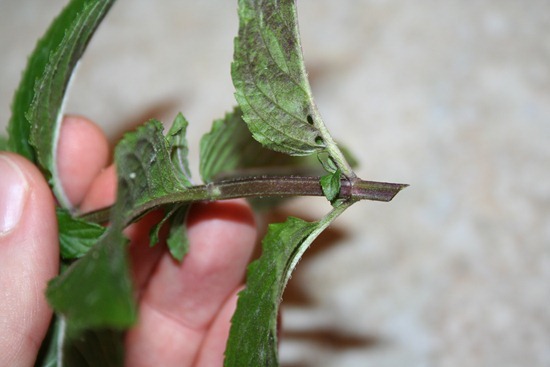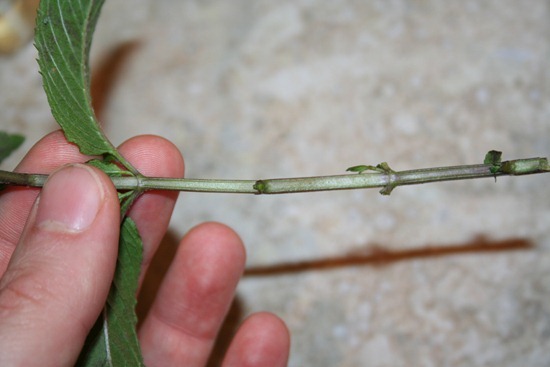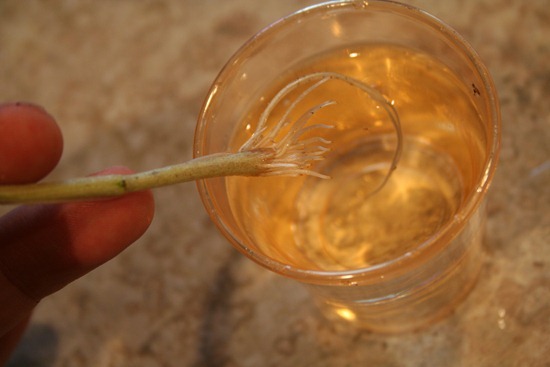Saving Thanksgiving rosemary and sage cuttings by cloning
5 months ago Uncategorized
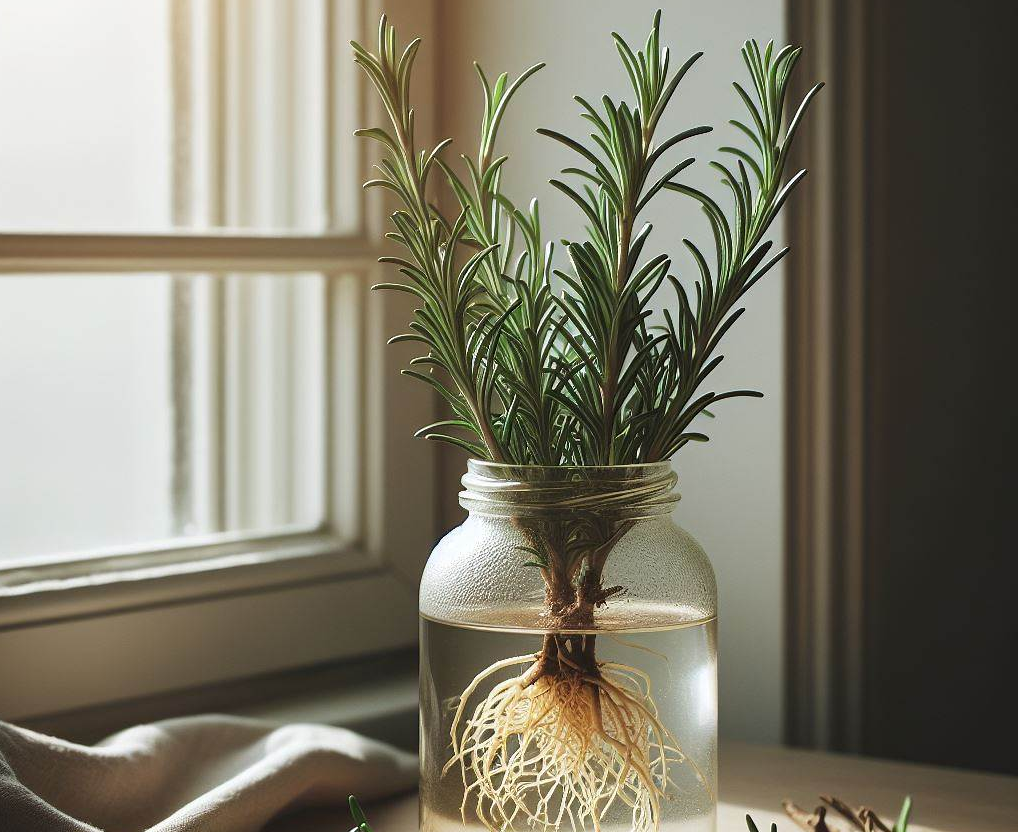
Hey, everyone! I hope you had a wonderful Thanksgiving with your loved ones. Sage and Rosemary are two repeating ingredients in which I typically would get from my herb garden but appears I was a bit lapsed on my watering this summer and plants didn’t make it, so I was forced to buy some fresh herbs from the grocery store. To avoid having to this next year I am repeating what I have done in previous years and cloning them to use next year. Here’s how.
First, you need to trim the cuttings to remove any leaves or flowers. You want to have a clean stem with a few nodes (the bumps where leaves grow). Then, you need to dip the cut ends in some rooting hormone, which you can buy at any garden center or online. This will help the cuttings develop roots faster and stronger.
Next, you need to prepare some pots with moist potting soil. Make a hole in the soil with your finger or a pencil and insert the cutting. Gently press the soil around the stem to secure it. You can put several cuttings in one pot, but make sure they have enough space between them.
Another option here if you are lapsed in remember to keep up in watering and you have an aerogarden you simple put these stripped stems in the water and then once they are more established with some solid roots then transplant to a small pot filled with some quality dirt.
Finally, you need to place the pots in a bright spot, but not in direct sunlight. You also need to keep the soil moist, but not soggy. You can mist the cuttings with water every day or cover them with a plastic bag to create a humid environment. In a few weeks, you should see new leaves sprouting from the nodes. That means your cuttings have rooted and are ready to be transplanted into bigger pots or into your garden.
And that’s it! You have successfully saved your rosemary and sage cuttings from Thanksgiving and cloned them to use next year. You can do this with other herbs as well, such as thyme, mint, basil, oregano, etc. It’s a great way to save money and enjoy fresh herbs all year round. Happy gardening!
Tags: cloning, herbs, rosemary, sage, thanksgiving
How to make dried basil
13.8 years ago basil, dehydrator, herbs
Summer has finally appeared here in the Pacific Northwest with temperatures in the 90s I decided this would be a good time to dry some herbs in the garage given it was already at the right drying temperature without any heating required.
Here is the basic steps to harvest, dry, and store your own dried basil.
- 1. Pick and clean (optional) the leaves
- Start by trimming as much as you may need for the next month. If the leaves are dirty give them a quick rinse and pat them dry with a paper towel. If the leaves are clean you can skip this step. You want to pick the greenest leaves you can find. In my case many of the leaves were not as green as I would have likes (they are getting better now the weather is improving)
- 2. Strip the leaves from the stem
- Unlike oregano this part if very easy use scissors (or just pinch off with your finger nails.
- 3. Dry the leaves
- If you have a food dehydrator place the leaves in a single layer and set to 90-100 degree F for about 24 hours. Alternately you can also dry the leaves by placing them in a screen in a dry warm place. You will know they are down when the leaves are crispy and can be pulverized easily with your fingers.
- 4. Storing the leaves
- Now you have two choices:
- 1. Keep the leaves whole and chop them as you need them for added flavor
- 2. Chop them up using a spice/coffee grinder (or Magic Bullet
with the grinding blade) and use them immediately as needed
As you can see the freshly dried basil (left) looks much better than the stuff hanging around in my spice rack, which was only a few months old.
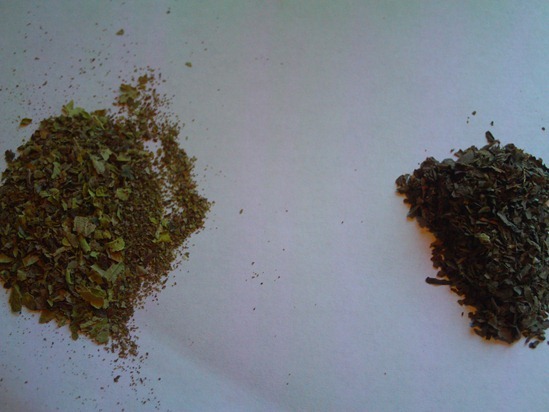
The picture above had two purposes, I actually place my herbs on paper then fold to easily pour into the old bottles.
Tags: herb garden, herbs
How to clone your own herbs in your garden
Cloning herbs is an inexpensive and fast way to expand your herb garden. This is also a great method to possible give or receive (with permission of course) from friends/neighbors.
Unlike cloning other organisms, plants have a much simpler procedure you can do in your kitchen.
1. Take cutting from mother plant. Cut a stem of total length of about 4-5 inches, cutting 1/2 inch above a leaf node. The leaf node is where the leaves attach to the stem. You want to make this cut at 45 degrees with a sharp knife/razor blade/shears.
2. Remove 2-3 sets of leaves. You want the plant to concentrate of growing roots rather than leaves so you need to trim off the sets of leaves that will be in water/rooting medium.
3. Start rooting process. You can apply a rooting hormone if you wish but I have had great results without needing to do this. Depending on the type of herbs you need to place your cutting in simply a container filled with water or some sort of rooting medium (Coir/Perlite/Coarse Sand/Rooter Plugs)
Herbs to start in water:
Basil, Thyme, Mint, Oregano
Herbs to start in Rooting Medium:
Lavender, Lemon Verbena, Lemon Balm, Rosemary, Sage, Santolina, Savory, Scented Geraniums, Stevia
Water Only Care. With the water only option you should change the water every couple days and ensure that the roots are always under water. You should see roots in a week to a week and a half. After the roots are well established you can then plant outdoors or to a 4 inch pot.
Rooting Medium Care. You will need to water the plants daily to ensure there is adequate moisture. After a couple weeks you should see that the cutting has a well established root system and can be transplanted to pot or outdoors.
Other ideas
I use this technique to save some money by purchasing a single plant at the my local garden center and then cloning to fill the space to get the harvest I am looking for. One other idea is to plant fresh herbs purchased from the grocery store, success may vary but should be fun to try…
This is also a great technique to extend your fresh basil throughout the winter. At the end of your outdoor season take a couple cuttings and place in water indoors. Use the fresh basil and when the plant appears to weaken take another cutting and repeat the process. Fresh basil all winter and a good basil plant ready for next spring.
Tags: herb garden, herbs
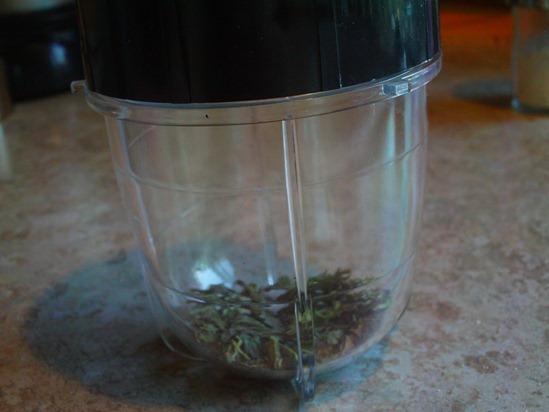
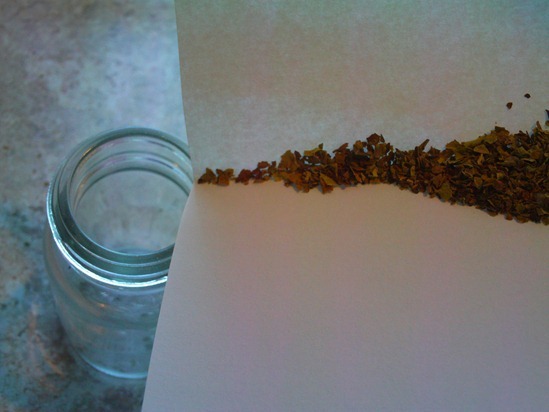
![003[1] 003[1]](http://www.cheapvegetablegardener.com/wp-content/uploads/2010/07/0031_thumb.jpg)
![032[6] 032[6]](http://www.cheapvegetablegardener.com/wp-content/uploads/2010/07/0326_thumb1.jpg)
